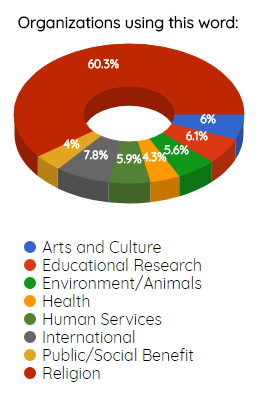 At Claxon, we embrace our word nerdery proudly. That’s because, like you, we know the importance of choosing the right words. One word can mean the difference between getting noticed and getting overlooked.
At Claxon, we embrace our word nerdery proudly. That’s because, like you, we know the importance of choosing the right words. One word can mean the difference between getting noticed and getting overlooked.
We love words so much, we create tools and resources such as The Wordifier so nonprofits can make their messaging remarkable.
We also love diving deep into a particular word to find out its history, its evolution, and its level of remarkable-ness. And we love sharing what we’ve uncovered so that you can make informed word choices for your cause.
That’s why we’re launching a Word of the Month series!
Each month, we’ll choose a word that’s commonly found in nonprofit communications, or a word we feel is underutilized by nonprofits. We’ll explain where the word comes from, how often it’s used, and what to watch for when determining whether or not to use it in your communications.
To kick off this series, we’re starting with the one word I’ve used more than any other in this post thus far. We’re getting a little silly, as well as a little meta. Have a guess?
This month’s word is “word”.
Before beginning to research the word “word”, I made the assumption that its origins would date back pretty far. As soon as we started having elements of speech to describe objects, actions, and ideas, it would follow naturally that we have a way to describe these speech elements themselves, right?
Yep. Turns out, the word “word” has been in use since basically the dawn of the English language, when “Old English” was spoken. It’s from the Proto-Germanic “wurdan”. (Don’t worry, I didn’t know what Proto-Germanic was either.)
Here’s the coolest thing I found out: In its original Old English, it also had an additional implication: a promise. There’s something beautiful, if not a bit intimidating, about a word being a promise. (Maybe this is where the phrase “as good as your word” stems from?)
There are many variations on “word” that arose much more recently. “Wordsmith”, for example, popped up in 1896, and “buzzword” came around in 1946, thought to be originated from Harvard students’ slang for the most important words in their lectures or readings.
And unlike a lot of other words whose popularity ebbs and flows over time, “word” has stayed pretty consistent in its frequency of use. No surprise there!
Even though this month’s Word of the Month is more of a playful announcement than a word your nonprofit actually needs to be conscious of, we decided to run it through The Wordifer to see what would happen.
Turns out, a majority of uses of this word are from religious organizations. This totally makes sense. (Think: “The Word of God”).
Thanks for joining us in having a bit of fun with the word “word”! Check in next month when we explore a word that can either boost your nonprofit messaging’s remarkable-ness, or bring you down to the land of the overlooked.









